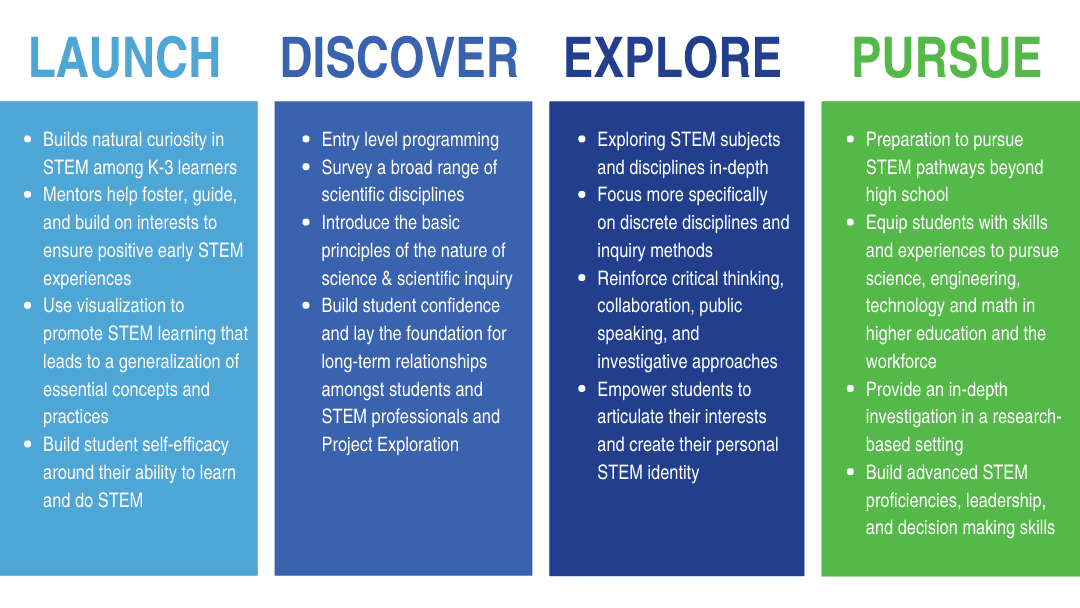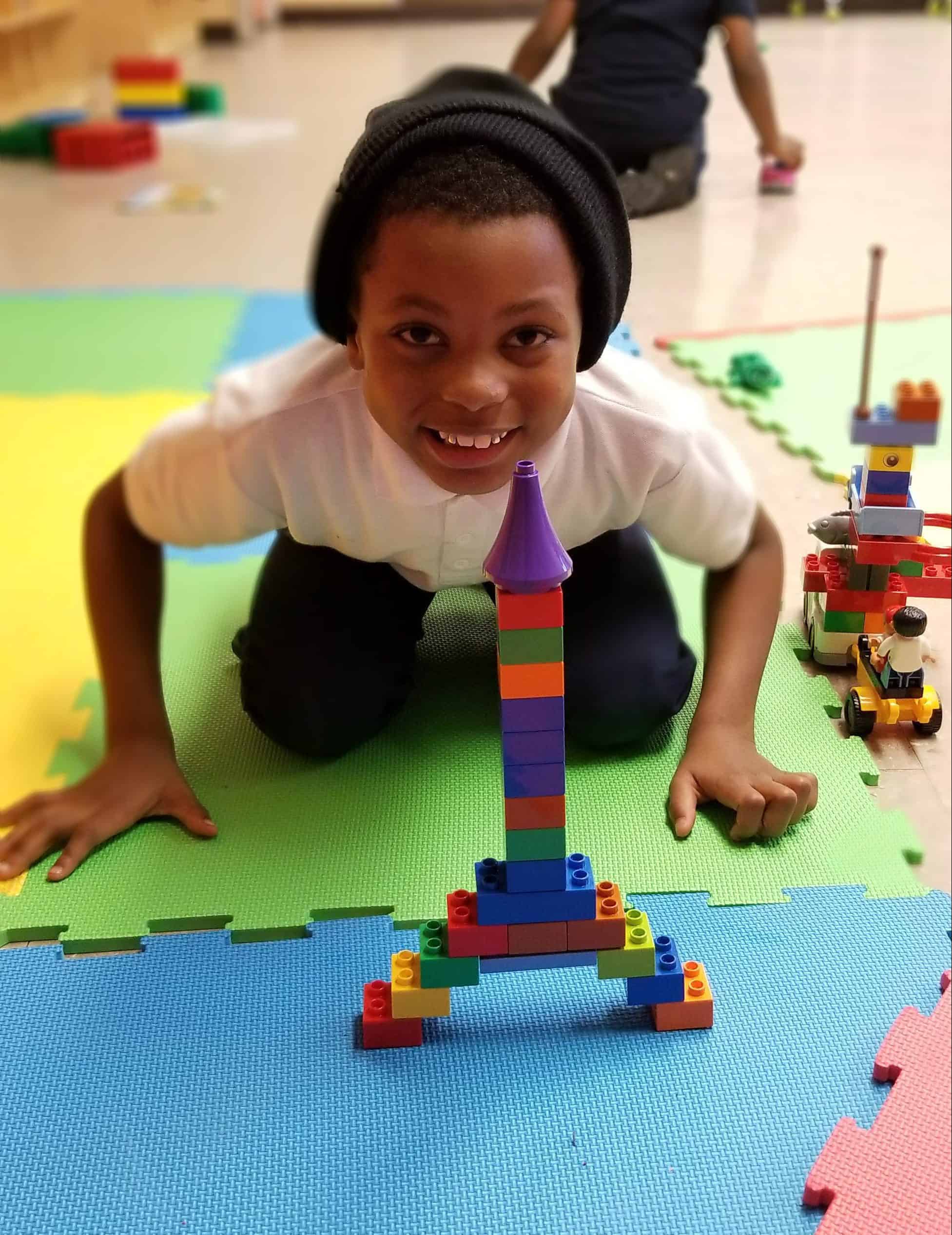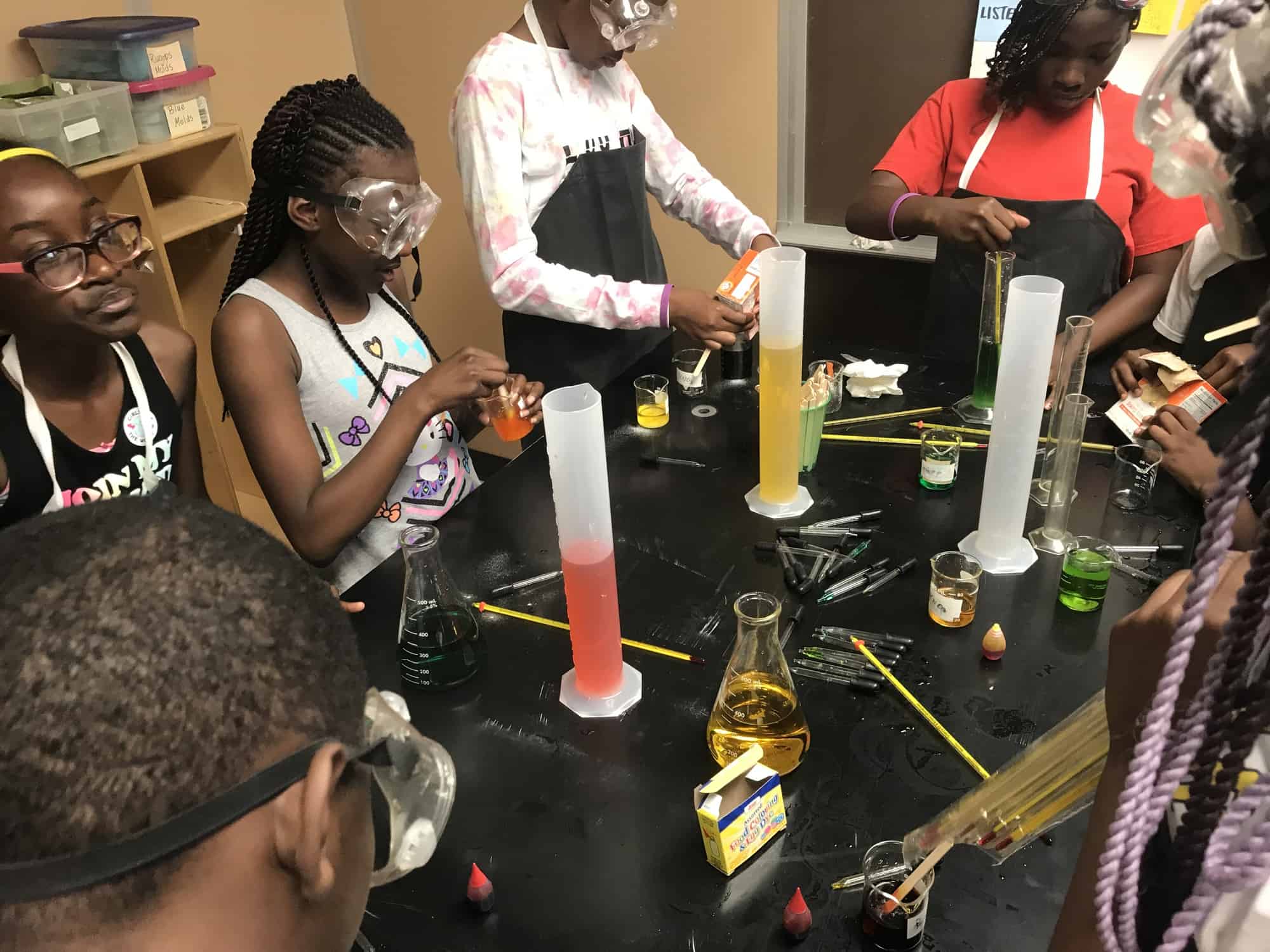Our Approach
Youth-Science Pathway Programs
Project Exploration’s out-of-school-time programs are organized into a framework called Youth-Science Pathways. Youth-Science Pathways (YSP) is a set of fluid, non-linear programs that reflect students’ emerging skills, curiosity, and ambition; these programs also encourage students to take ownership of their learning, become active members of the STEM community, and invest in a lifelong practice of inquiry.
The Discover phase of YSP introduces students to a broad range of scientific and engineering disciplines and topics, including the basics of the nature of science, scientific inquiry, and the engineering design process. This phase sparks interest and engagement from students as they familiarize themselves with STEM. The Explore phase centers specific disciplines and inquiry methods, while reinforcing students’ critical thinking skills and investigative abilities. Finally, the Pursue phase brings students into an in-depth investigation in a research-based setting; here, students become equipped with the competencies and experiences needed to pursue STEM in higher education and the workforce.
Historically, Project Exploration has served students in grades 5-12, but the establishment of the STEM Learning Center on Chicago’s West Side presented the opportunity to establish programs that served participants’ siblings in grades K-3. The Launch phase, as a precursor to the Discover phase, creates opportunities for K-3 participants to engage their natural curiosity in STEM. In this program, students have a STEM mentor who helps them foster, guide, and build on their interests to ensure positive early STEM experiences. Programs also use visualization to promote learning of general essential concepts and practices in STEM, building students’ self-efficacy around their ability to learn and do STEM. The founding participants of the K-3 Launch program ultimately named it the Building Block Club.
Goals of Youth-Science Pathway Programs:
- Engage students in a community of STEM practice including STEM professionals, educators, and each other, thereby strengthening their connection to learning;
- Build scientific skills, fuel curiosity, and encourage students to identify themselves as scientists through hands-on science experiences that demonstrate the value of scientific inquiry;
- Challenge students to develop their perseverance, emotional resilience, interpersonal skills, and leadership ability, thus equipping them for long-term achievement;
- Work with communities to create a more equitable, authentic, and engaging STEM environment, both in school and out.
As a result of participating in our programs, students report:
- Increased self-confidence in STEM competencies, skills, and abilities.
- Increased self-efficacy in critical skills like leadership, communication, and collaboration.
- Increased STEM aspirations or pursuits, including careers.
Program Levels

14 core competencies that students develop over time in STEM:
- Building Models
- Building Scientific Knowledge
- Using Math
- Investigating
- Understanding Science as a Social Endeavor
- Observing
- Reflecting
- Collaborating
- Taking Personal Initiative
- Being Curious
- Communicating
- Being Part of a Community
- Developing Leadership
- Developing Self-Identity
In each of these 14 core competencies, we have drawn upon research in STEM education, informal science learning, and youth development to identify specific skills that youth are developing. We have written about our unique model to engage at-risk youth in STEM out-of-school time learning in the Afterschool Matters Journal (2012, Volume 12).
By focusing on, and showing success with, these populations Project Exploration is addressing critical issues facing STEM education today: inequality of opportunity, lack of diversity, and workforce development.


